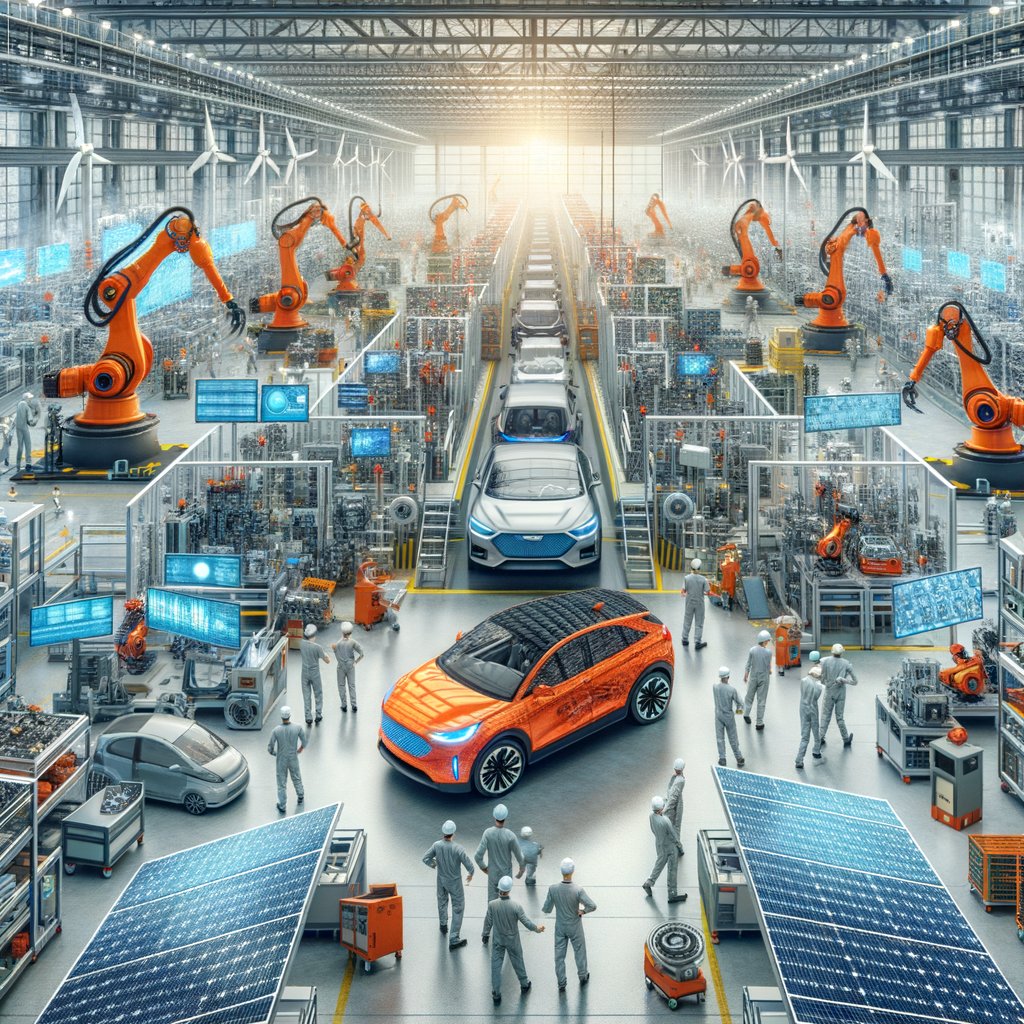Physical Address
304 North Cardinal St.
Dorchester Center, MA 02124
Physical Address
304 North Cardinal St.
Dorchester Center, MA 02124

The world of car manufacturing is currently undergoing a significant transformation, driven by the increasing adoption of renewable energy. This shift is not only reshaping the automotive industry but also has profound implications for our environment and economy. In this article, we will delve into how renewable energy is revolutionising car manufacturing and explore some of the key trends driving this change.
Renewable energy sources such as wind, solar, and hydroelectric power are becoming increasingly popular in various sectors, including car manufacturing. Their appeal lies in their sustainability and reduced environmental impact compared to traditional fossil fuels. As global awareness about climate change grows, industries worldwide are seeking ways to reduce their carbon footprint, and adopting renewable energy sources is an effective way to achieve that goal.
The use of renewable energy in car manufacturing takes many forms. Solar panels installed on factory roofs can generate electricity for production processes. Wind turbines can supply power for assembly lines. Hydroelectric power can be harnessed to produce aluminium for vehicle parts.
For instance, Tesla’s Gigafactory in Nevada uses a 70-megawatt solar array – one of the largest in the world – to help power its operations. BMW’s plant in Leipzig, Germany, relies on wind turbines for nearly all its electricity needs. Ford’s Rouge Center in Michigan has a living roof covered with plants that absorb rainwater and carbon dioxide while providing insulation.
Beyond reducing greenhouse gas emissions, using renewable energy sources offers several benefits for car manufacturers. These include cost savings over time due to lower energy costs; increased independence from fluctuating fuel prices; improved brand image as consumers become more environmentally conscious; and potential government incentives for using green energy.
Despite the clear benefits, transitioning to renewable energy is not without challenges. The initial investment can be high, and the availability of renewable resources can vary depending on location and weather conditions.
However, many car manufacturers are finding ways to overcome these obstacles. For example, they may use a mix of different renewable sources to ensure a steady supply of power. They can also store excess energy produced during peak times for use when production is high or renewable resources are low. In addition, many governments offer financial incentives to companies that invest in renewable energy, helping to offset the initial costs.
As technology continues to advance and the cost of renewable energy continues to fall, it’s likely that even more car manufacturers will make the switch to renewables. Furthermore, as electric vehicles become more popular, there will be increased demand for cars made using green energy.
Innovations such as smart grids – which use digital technology to optimise the production and distribution of electricity – could further boost the use of renewables in car manufacturing by making it easier for factories to manage their energy usage efficiently.
The rise of renewable energy in car manufacturing represents an exciting shift towards a more sustainable future. While challenges remain, the benefits – both environmental and economic – make this a trend worth watching closely.